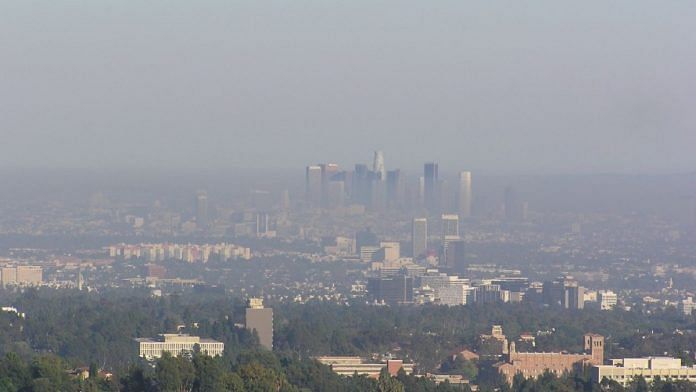“It’s positively alpine,” said one Delhi resident. Cleaner air is always welcome news to urban populations. And never more so than in the light of new research that finds people with long exposure to unhealthy levels of air pollution are now at greater risk of dying from COVID-19.
New research published in the journal Science of the Total Environment has found that long-term exposure to air pollution may be “one of the most important contributors to fatality caused by the COVID-19 virus” around the world.
The study looked at COVID-19 fatalities in four of the countries that have been hit hardest by the virus – Germany, France, Italy and Spain. It found that 78% of deaths had occurred in just five regions in northern Italy and Spain. These regions, the report notes, have the highest concentrations of nitrogen dioxide (NO2), a pollutant harmful to human respiratory systems, while their geography means these areas also suffer from downward air pressure, which can prevent the dispersal of airborne pollutants.
Italy’s worst-affected region has been Lombardy (home to Milan), which has recorded almost half of Italy’s total number of fatalities. Along with Piedmont, Emilia Romagna and Veneto, the Lombardy region sits in the Po Valley, which is ringed by mountains – hence the downward air pressure. In Spain, the worst-affected area has been the Madrid administrative region, which – as the study points out – is similarly surrounded by mountains.
As the following graph shows, there is a very strong correlation between levels of NO2 and deaths associated with COVID-19.
As the study’s authors put it: “Poisoning our environment means poisoning our own body, and when it experiences a chronic respiratory stress, its ability to defend itself from infections is limited.”
Another recent study by Harvard University has generated similar findings. An analysis of 3,080 US counties found that even a small increase in long-term exposure to air pollution could have a significant effect on the severity of COVID-19 symptoms. It posits that lowering the average amount of airborne particulate matter in Manhattan by just one microgram over the past 20 years could have led to 248 fewer deaths from the disease in the borough to date.
Also read: Italy has a reopening plan with a caveat on second coronavirus wave
Airborne vectors
As well as weakening our respiratory systems and making us more susceptible to COVID-19, air pollution might also be functioning as a vector – that is, as a method of transmission for the virus. Scientists in Italy have detected coronavirus on particles of air pollution, which could, they believe, help the virus spread. The findings are preliminary however, and it is not yet known whether the virus remains viable after hitching a ride on pollution particles, or whether it can do so in sufficient amounts to cause infection.
This article was originally published in the World Economic Forum.



